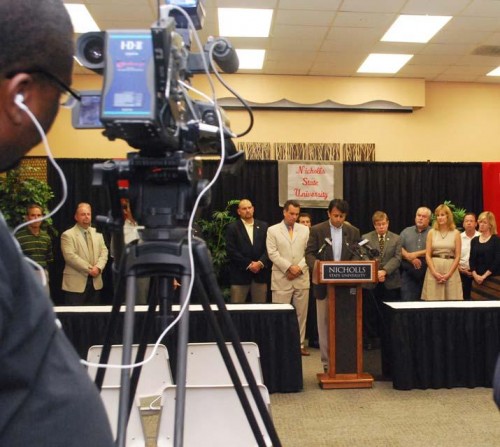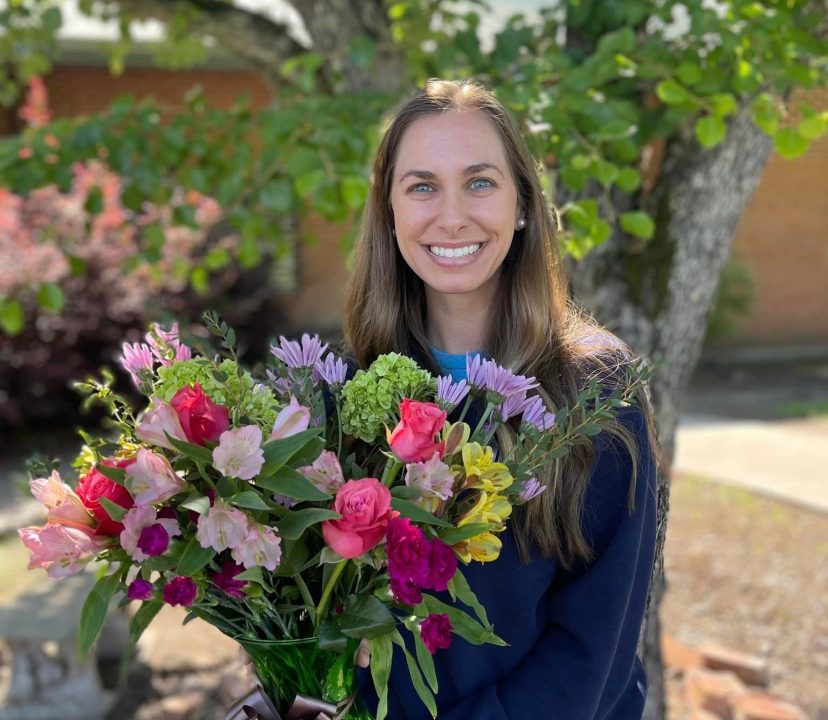
Roxanne Matherne White
July 28, 2011Matthew Johnson Jr.
August 1, 2011It was a “very necessary step” and a “significant step forward,” the governor’s outline of “bold, innovative steps” to replenish Louisiana’s coastline.
Elected officials and dignitaries from across southeastern Louisiana gathered in Thibodaux last week to laud Bobby Jindal’s message, the allotment of $60 million to resuscitate six coastal restoration projects previously delayed by “paperwork, red tape and studies.”
Jindal had his metaphorical pair of scissors on hand, doling out Coastal Impact Assistance Program funds for coastal protection and restoration projects. He said the current wave of monies brings the total investment in coastal projects to $1.7 billion in state and federal funds under his regime.
“After four hurricanes and the BP oil spill in the last few years, it is imperative we do everything we can to restore our coast and get to work on hurricane protection projects that will lessen the impact of future storms,” Jindal said. “These six projects represent more critical progress for restoring our coast.”
The Tri-parish highlight is the renewed focus on reintroducing Mississippi River water into Bayou Lafourche. Jindal said $20 million has been dedicated for the second phase in renewing the historic bayou as an outlet.
The bayou will be dredged at its old intersection with the Mississippi River at Donaldsonville, the governor said, which will direct additional fresh water and sediment to marshes in south Lafourche and Terrebonne.
The Bayou Lafourche project is more than coastal restoration, however, as the enhanced flow of freshwater will carry an additional benefit of improving the water quality and reduces the chances of another boil water order for the 300,000 residents who use the bayou as a source.
Following Hurricane Gustav in 2008, Lafourche Parish issued a boil advisory, which provoked the governor’s office and the Coastal Restoration and Protection Authority to commit $24 million to the first leg of the project. The parish also used $3 million in Community Development Block Grant funds to refurbish the bayou’s pump stations.
Lafourche Parish President Charlotte Randolph called the governor’s projects a recognition of “the importance of Lafourche and other coastal parishes.”
“This is a very significant step,” Randolph said. “It has been part of our long-term plan to introduce additional water into Bayou Lafourche for all the benefits it provides to us.”
Regarding Terrebonne Parish, the governor announced $3.3 million in dedicated CIAP funds for the Falgout Canal Freshwater Enhancement Project, which will tie into Reach E of the Morganza to the Gulf System.
The project will install water control structures through the proposed levee on the south side of Falgout Canal Road. It will allow fresh water to flow unabated through the levee without compromising the system’s integrity.
Terrebonne Parish President Michel Claudet said the project has been delayed for more than 10 years.
“Today’s announcement sends a strong statement to the residents and the businesses of Terrebonne Parish that this administration and our state and our leaders all understand the coastal challenges that we face and are willing to propose solutions,” Claudet said.
Jindal said $750,000 would be dedicated to a study for the Atchafalaya Long Distance Sediment Pipeline. The project would aim to move sediments dredged from the Port of Morgan City’s Channel Maintenance Program to low-sediment marshes in central and eastern Terrebonne.
“This shows, for years we’ve been pushing the federal government to make beneficial use of the sediments they’ve dredged for navigational purposes,” Jindal said. “We’re no longer just waiting for the federal government, we’re moving ahead on our own.”
“We all know in Terrebonne the necessity of our Morganza to the Gulf project,” Claudet said. “But we also know if we’re ever going to do anything to stop coastal deterioration and potentially get where we are building those, it’s got to be coming from sediment from the Atchafalaya, and today is a very necessary first step.”
The heftiest allotment is $26.5 million for 21 miles of bio-engineered oyster reef, which will be installed in fringe marsh in St. Bernard Parish. The Living Shorelines and Shoreline Stabilization Demonstration will mitigate “wind-wave induced shoreline erosion” and create an additional fishery habitat, Jindal said.
Jindal said $5 million was dedicated for the evaluation to maximize the land-building capability of Mississippi River sediments. “This tool will be used to guide future decisions rather than serving as an impediment to projects that Congress has already authorized for construction and already set to go.”
Four million dollars is going to the Coastal Forest Conservation Initiative, a project geared at preserving coastal forests, which serve as hurricane barriers.
The U.S. Secretary of Interior administers the CIAP to oil- and gas-producing states to mitigate damages on the Outer Continental Shelf and provide for coastal restoration, conservation and protection.
Louisiana will receive $496 million, 35 percent of which will go to 19 coastal parishes and the other 65 percent of which will go to the state, Jindal said.
The governor said after the meeting he is “cautiously optimistic” that Congress would agree to send more money to the Gulf Coast for coastal restoration and conservation projects that would safeguard a large segment of the nation’s oil and gas infrastructure.
“If they don’t spend these dollars now, they’re going to spend billions on oil and gas and hurricane damages in the future,” said Jindal, who added that such projects have bi-partisan support on Capitol Hill.
Gov. Bobby Jindal announces from the Nicholls State University campus $60 million that will go toward previously delayed coastal restoration and protection projects. ERIC BESSON








